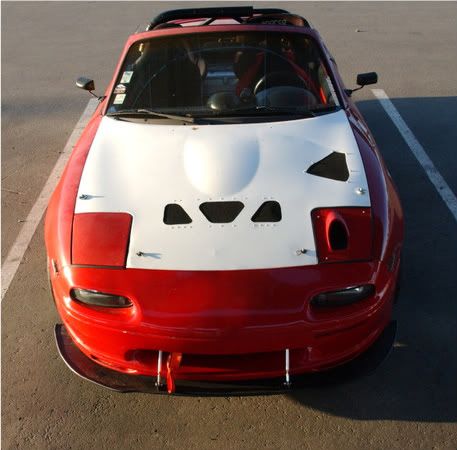IF you track your car, cutting your hood to allow heat to escape from behind the radiator can be beneficial. If you don't go to the racetrack, there is absolutely no need.
While the pattern he chose to cut out (copying the pattern on the underside of the S2K hood) looks cool, it is really not ideal for cooling. The rear half of the hood is seeing positive pressure, which means any holes in the hood on the back half of it will be letting air in, not out, which is not the goal. Looking at the pic of the underside of his hood, he would have been better off cutting out one of the center sections, right behind the radiator. None of the holes he cut are very close to the back of the radiator, and the back two are not going to be helping vent air out at all.
What I'm talking about can be done on our cars. This is an old pic, but it shows what I did:
Those three trianglular holes mimick the shape of the bracing on the underside of the hood, and sit just behind the back of the radiator.
Also another important thing to understand is that a proper "extractor" hood will work better than just holes cut in the hood. By this I mean something that dips down into the engine bay to facilitate the flow of air up and out of the hole in the hood. But, holes like I did will indeed help.
Agian, there is no point if you aren't tracking the car. Even turbocharged, I had no heat issues on the street or at the autocross with merely a 37mm Koyo radiator. It's not until you are going hard for 30 minutes sessions at the track that this becomes a necessity.
-Ryan






